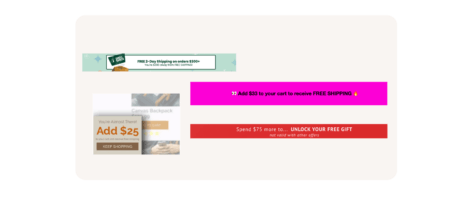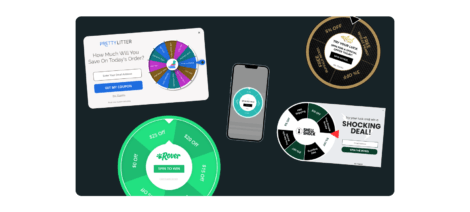80% of Americans are online shoppers, and more than half of them have made purchases on mobile devices.
If that statistic doesn’t make you instantly want to audit your mobile experience, re-read it. We can’t emphasize enough how critical it is to your conversion rate and your bottom line to make sure your mobile user experience (UX) is as clean, clear, and as accessible as possible.

What’s The Big Deal About Mobile SEO?
Mobile traffic is fundamentally different from desktop–so making sure you respect the smaller screen size and need for a slightly different browsing experience is of utmost importance. With Justuno, you can create mobile-specific promotion designs instead of using a one-size-fits-all approach, helping stay inline with Google’s specific mobile SEO guidelines. Beyond that, we’ll talk about structuring pop-ups that aren’t intrusive, best practices for designing mobile promotions, and exceptions to these guidelines.
1. Timing
Google will penalize you for immediately showing a pop-up on an initial site visit–interrupting the user experience. Instead, use interest/engagement indicators such as pages visited (second or third page) or % scrolled down page (30%).
Pro Tip: Percent Scroll is a personal favorite of our Conversion Strategists. By taking the action of scrolling down the page, they’re demonstrating interest, which can then trigger a message they’ll likely to be interested in.
2. Banners
Banners that take up a minimal amount of space are another great way to stay within Google’s guidelines. Include an obvious opt-out button, and keep the banner attached to the bottom of the page so your page’s main content remains above the fold.
3. “Responsible Pop-Ups”
Google offered a few exceptions for specific situations where larger pop-ups that interrupted a user’s experience were okay, particularly cookie usage (GDPR) announcements and age verification for sites with legal obligations to restrict access. Also, sites with content not publicly available or indexable (AKA those that require logging in for access such as emails).
Design Best Practices
Simplify: Don’t ask too much of mobile customers, require as few fields as needed to maximize opt-in rates. By reducing how much information they need to type in, you’ll make it more likely they’ll complete the sign-up process. Similarly, concise copy and a clear CTA are critical to simplifying what you want your mobile visitors to do, and driving desired actions.
Need for Speed: There’s nothing more annoying than waiting for a webpage to load. Keep in mind it’s likely that mobile users may not be on WiFi, so any large-file format media will load slowly–increasing the likelihood of the visitor leaving without converting.
Go Big or Go Home: Make your buttons 40-45px tall at a minimum so they’re easily thumb-tappable on mobile displays. Text should be no smaller than 16px since ISO devices automatically zoom in on smaller elements, which can sometimes disrupt the user experience.
Let Them Leave: Exit and close buttons are a critical component for mobile pop-ups. We recommend using buttons so it has a more easily clickable area, rather than using an ‘X’ in the corner. Many visitors will get annoyed if you make it difficult for them to close a promotion or even worse, don’t give them the option.
Location, Location, Location: Test and ensure that your on-site promotions don’t overlap, or interfere with critical UI elements such as login buttons/portals, navigation sections, or live-chat windows. There’s nothing worse than keeping high-intent visitors from what they’re trying to get at.

The Final Takeaway
Your mobile experience should be just as important, if not more so, than your desktop site experience. These days, consumers are 62% less likely to shop with you if they have a bad mobile experience, and 57% won’t recommend your business based on poor or unresponsive web design.
The statistics above show just how much money you may be leaving on the table by not taking the time to work through your mobile experience. Start planning a site audit today, and see how Justuno can help you convert mobile visitors into customers.




